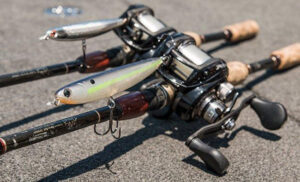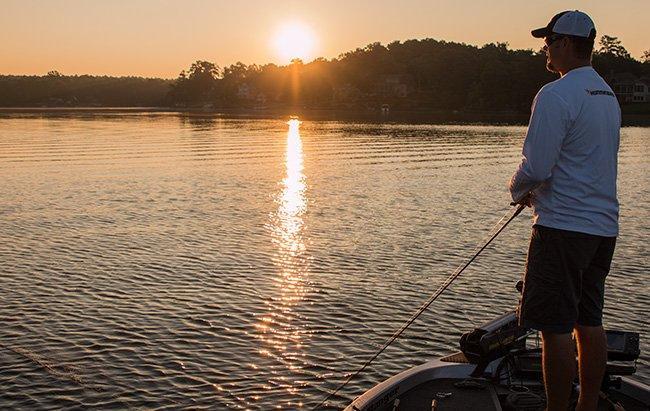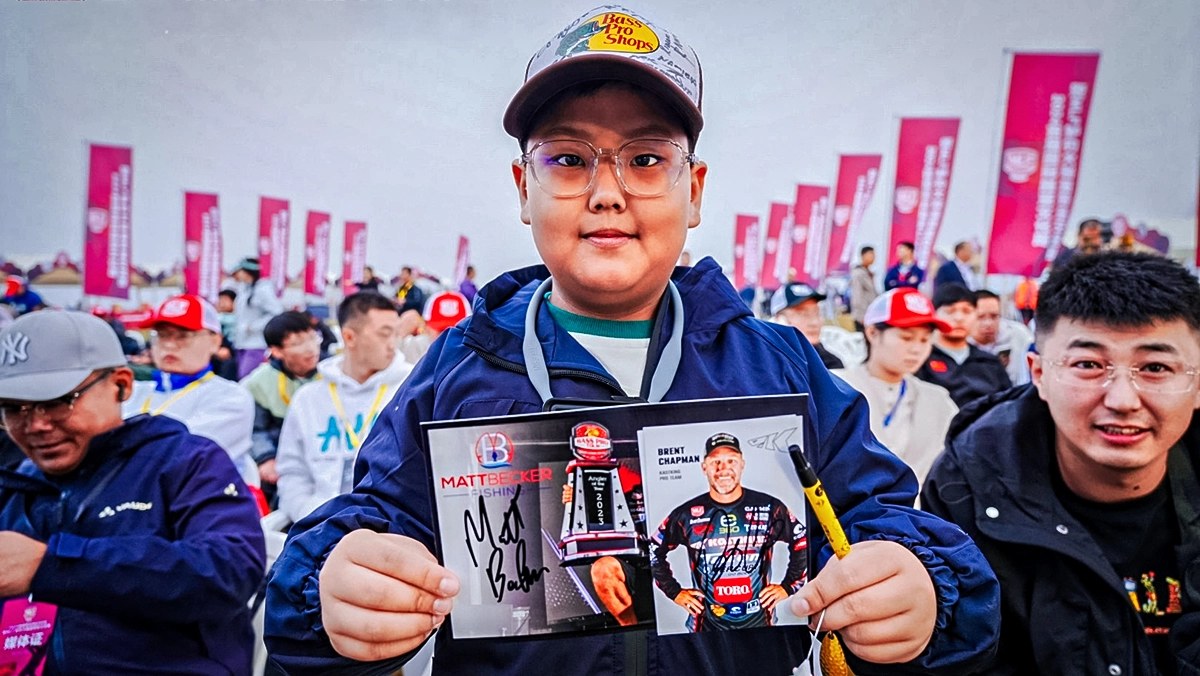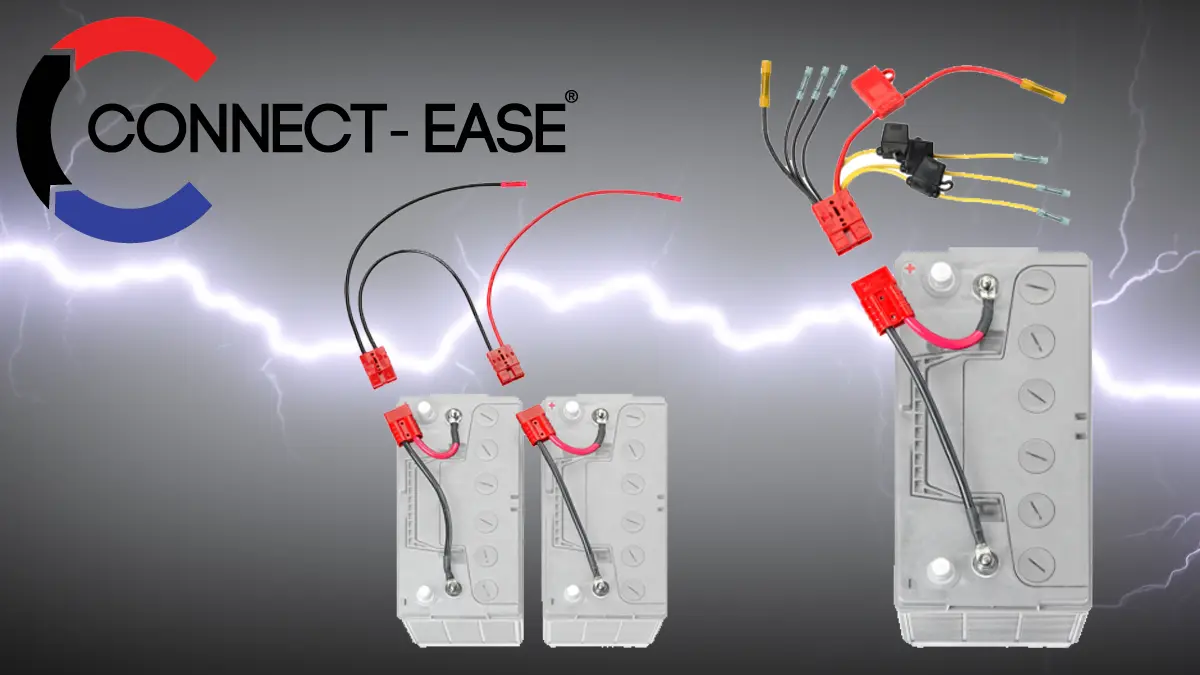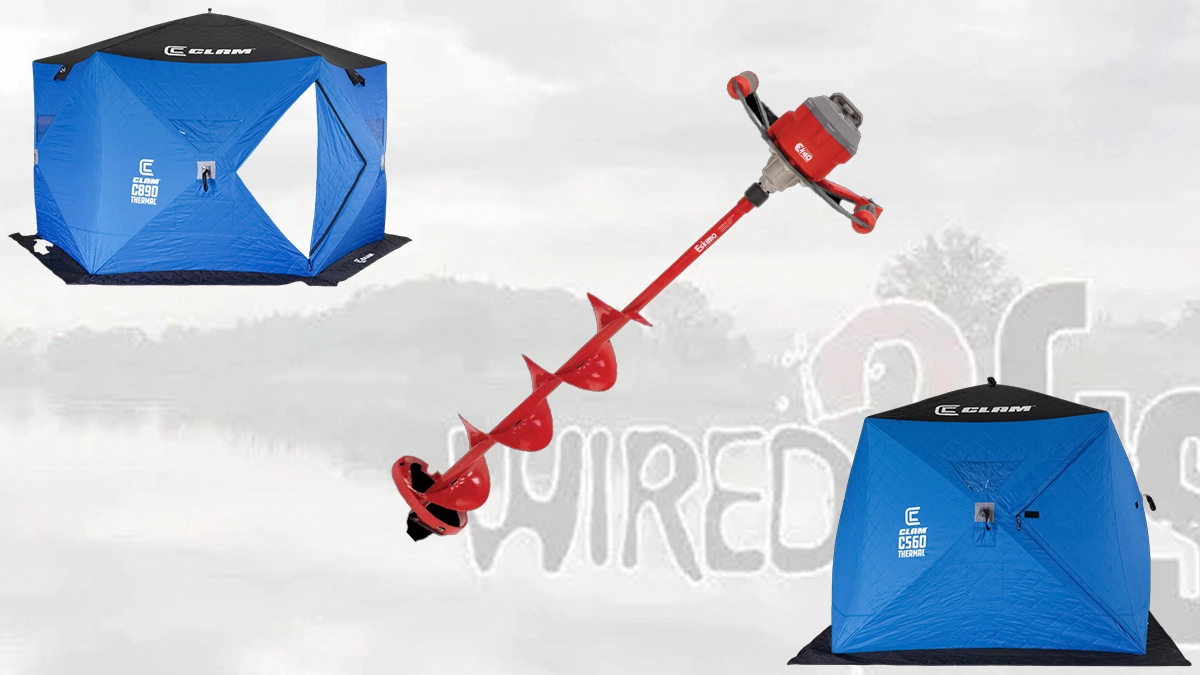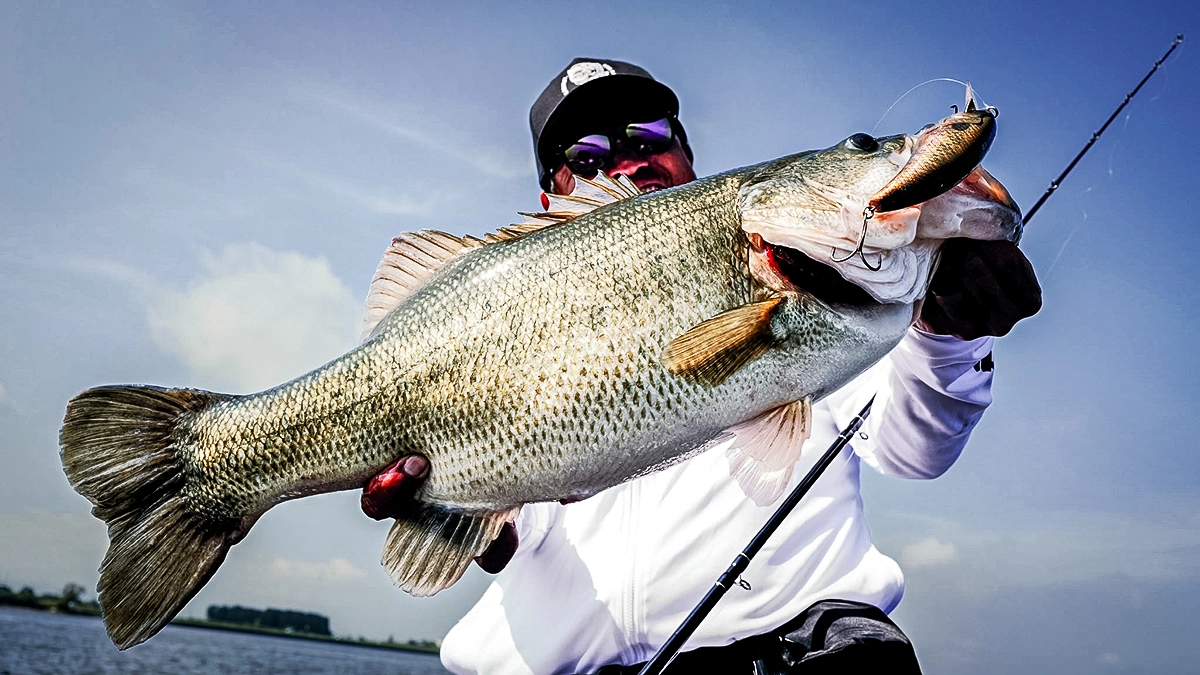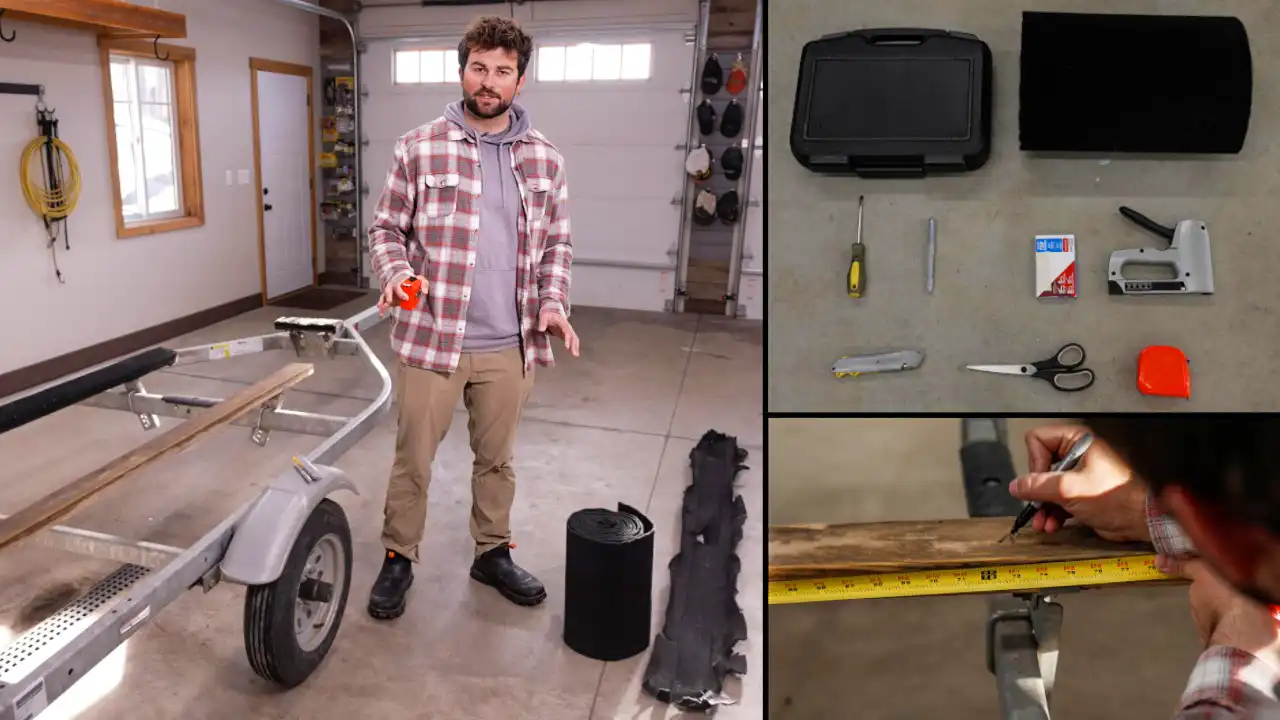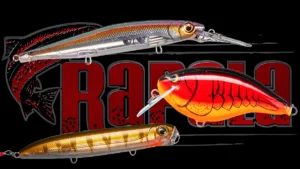It’s hard to find an angler who doesn’t love topwater fishing—there’s something about seeing a giant bass explode at the water’s surface that never gets old. Although it may not be an ideal technique throughout the entire year, you’re in luck right now. As the shad begin making their annual shallow water migration, this is a perfect time to cover water quickly with your favorite walking topwater lure.
Fisheries biologist and BASS Opens pro Michael Murphy enjoys continued success with walking topwaters throughout the late summer and early fall months. He has developed six simple tips that will help you quickly locate active bass, get more blowups and land more bass.
The winds—and rains—of change
It happens to most of us at some point throughout the late summer—the bass fishing action turns slow and we lose a little motivation. Sprinkle in some intense heat and stagnant water conditions and our hobby can quickly turn into somewhat of a chore. Those days are coming to an end, however, and Murphy attributes this positive change to three primary factors.
“It’s tempting to get glued to your temperature gauge as you wait for the topwater bite to turn on. But a significant proportion of both the shad and bass activity is dictated by the length of days.”
- Rain—”As fall approaches, most regions of the country begin to experience an influx of rainfall,” Murphy said. “This precipitation acts as a catalyst for shad movement. July and August are very stagnant months and the shad tend to hang out at the deeper depths to take advantage of the more favorable water conditions. Rainfall, however, washes nutrients into the water which gives those shad a reason to start moving towards shallower water.”
- Wind—”Shad love to feed on zooplankton,” Murphy said. “And these rainy conditions are often accompanied by windy conditions. A lot of people think the wind pushes the shad into predictable areas, but it actually pushes the zooplankton and the shad follow. Not to mention, wind also churns the water and increases oxygen levels, resulting in more activity in foreseeable areas.”
- Length of days—”It’s tempting to get glued to your temperature gauge as you wait for the topwater bite to turn on,” Murphy said. “But a significant proportion of both the shad and bass activity is dictated by the length of days. As the days get shorter and reach approximately 13 hours in length, you can expect a solid topwater bite somewhere on your local fishery. The fish are much more likely to stay higher in the water column when the days become shorter.”
Agitators and broadcasters
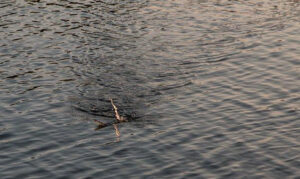
As the shad migration heats up this month, walking topwaters provide anglers with an opportunity to cover water at astounding speeds. Sure—you can catch a few fish on slower moving topwaters such as poppers and prop baits, but Murphy stresses the need for speed in this situation.
“Early in the migration, you might not always find huge concentrations of bait,” Murphy said. “It will take the shad a few weeks to get on the same page, so it’s important to cover water quickly so you can find the most activity in a given area.”
To simplify his lure selection process, he divides his topwaters into two major categories—agitators and broadcasters.
- Agitators—”Agitator lures, such as poppers, topwater frogs and prop baits are most effective when you’re targeting specific pieces of cover,” Murphy said. “These lures are excellent when the shad are in the backs of creeks because they emit more disturbance in off-color water and they stay in those smaller strike zones much longer.”
- Broadcasters—”I put walking topwaters into the ‘broadcaster’ category,” Murphy said. “They allow you to cover large areas with just a few casts and you can work them very quickly. My concept is pretty simple—the longer and skinnier the lure is, the more effective it will be in open water scenarios.”
Cadence is everything
Of course, you can’t just work a walking topwater lure haphazardly and expect consistent success. The cadence of your lure is all-important because, after all, it’s what triggers the bass to attack it. It’s important to pay close attention to your cadence and to portray a lifelike imitation of natural shad behavior.
“Your cadence is everything with this technique,” Murphy said. “You never want to pull the bait with your rod tip because it’s simply not natural. Instead, start your walk-the-dog motion with slack line and end with slack like. The rod needs to be going full-speed when it ‘hits’ your lure because it will cause it to walk more aggressively and emit more action in a smaller area, making each cast more thorough and efficient.”
“If I’m catching a bunch of small bass, I’ll usually speed my cadence and start catching better quality. Big bass are strong swimmers and can catch a quickly worked lure easier than small bass can.”
Smaller bass are a common occurrence for many anglers throughout the shad migration period. At times, it seems as if you can’t get away from 12-inchers. According to Murphy, the solution to this issue lies in—you guessed it—your cadence.
“Most of the time, I’m going to ‘walk’ the lure back to the boat with a steady, deliberate cadence,” Murphy said. “You have to experiment to find the best speed because ideally, you want your lure walking just fast enough where the small bass miss it and the larger bass can catch it. If I’m catching a bunch of small bass, I’ll usually speed my cadence and start catching better quality.”
Identify prime targets
You’ll see a lot of anglers targeting skinny water with topwaters this time of year but the concentrations of bass relating to open-water structure are often left unmolested. Make no mistake about it—the bass and shad are on the way to these areas, but the ability to identify their likely stopping points can prove invaluable.
There are four areas that produce consistent walking topwater action for Murphy and fortunately, they’re fairly simple to duplicate on most local fisheries.
- Points—”You can be certain that there will be a lot of activity on points right now,” Murphy said. “Bass prefer to be within a few hundred yards of deep water at all times and these areas give them that opportunity. In the very early stages of the shad migration, you’ll have most of your success on primary, or main lake, points. When that pattern dissolves, simply move into the nearest creeks and target secondary points. They’re steadily moving back and will use these areas the same way humans use exits on the interstate.”
- Mouths of pockets—”I always like to target the mouths of smaller pockets this time of year,” Murphy said. “These little bends often act as underwater highways. Both the bass and shad are going to use the paths of least resistance as they move to and from shallow water and these areas can be definite hotspots for walking topwaters.”
- Bluff ends—”Bluff ends are where the bottom contour transitions from deep creek channels to shallow, sloping flats,” Murphy said. “They give bass easy access to deep water and also provide an incredible ambush point when they decide to feed.”
- Last deep water—”I consider the last four to six-foot deep water in a creek as ‘loading areas’,” Murphy said. “You’ll find some fish that have been shallow all year as well as the ones that are still coming in. Essentially, it’s a dead-end, transitional zone that can get absolutely stacked with bass before they move into the back flats of the creek.”
Braided line isn’t a necessity
Braided line seems to be all the rage in the bass fishing world as of late. We’ve started applying it to finesse fishing and most recently to walking topwater lures. You’ll find two different schools of thought on this topic and Murphy happens to be a little more “old school” with his line selection.
Murphy’s two favorite topwater setups
- Ima Skimmer: 6-foot, 8-inch Denali Rosewood Jerkbait Casting Rod, 6.4:1 Lew’s BB-1 Pro Series Speed Spool Casting Reel, 15-pound monofilament
- Ima Skimmer Grande, Ima Little Stick: 7-foot, 4-inch heavy-action Denali Rosewood Casting Rod, 6.4:1 Lew’s BB-1 Pro Series Speed Spool Casting Reel, 20-pound monofilament
“I use 15 to 20-pound monofilament when I’m fishing with walking topwaters,” Murphy said. “Some anglers believe that braid aids in hook penetration, but I feel like the lack of stretch rips a bigger hole in the bass’ mouth, causing a poor hookup ratio.”
Murphy also believes the high amount of stretch in monofilament actually plays into the angler’s hands when it comes time to set the hook.
“When you’re fishing walking topwaters over open water, you’re going to have some long-distant hooksets,” Murphy said. “In my opinion, however, the hookset doesn’t really take place until the bass is halfway to the boat. When they first eat the lure, it’s all about keeping tension and maintaining a low rod tip. As the bass writhes throughout the fight, they will actually hook themselves.”
The next time you go fishing, spend some time covering water with a walking topwater lure. Whether or not you’re seeing surface activity, it’s an excellent technique to find active fish and stay on-top of the ever-important fall shad migration.
